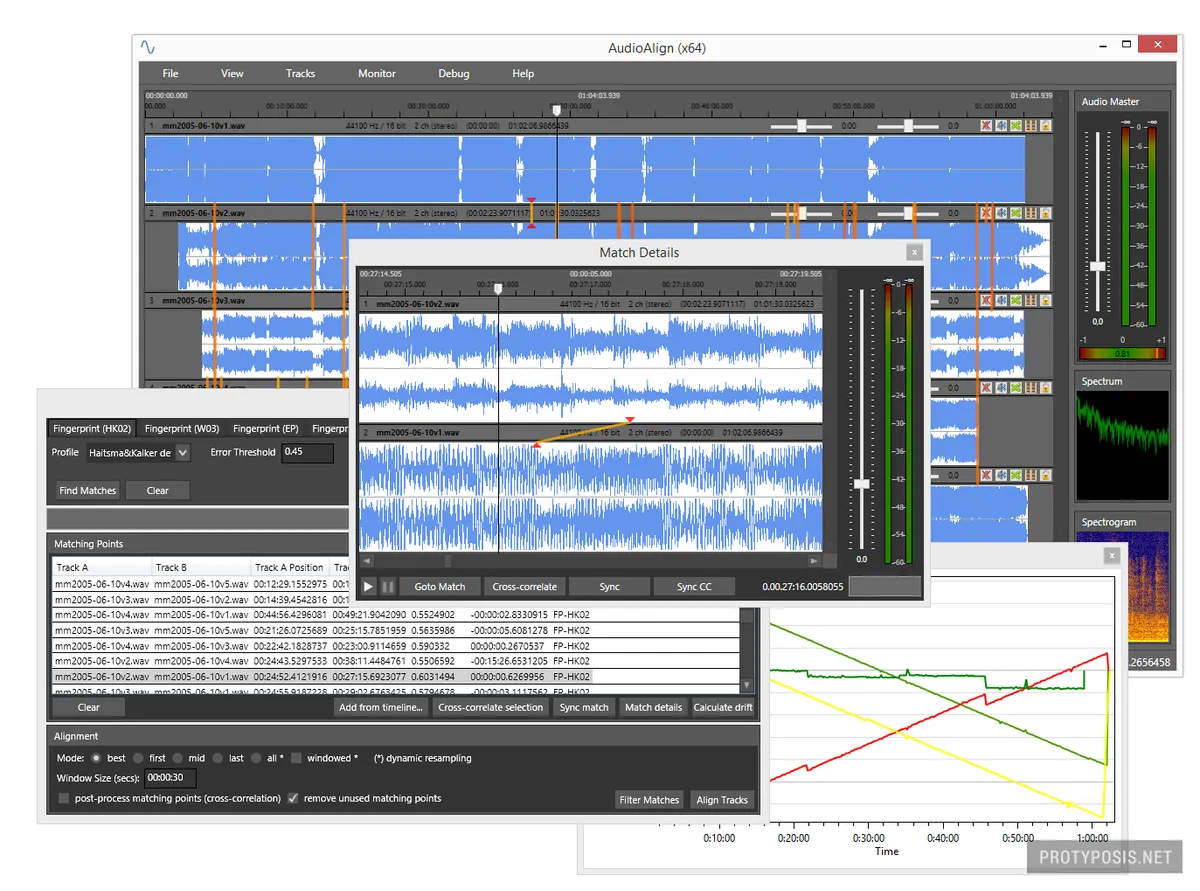Introducing Aurio and AudioAlign

AudioAlign is a tool that I started developing in 2010 for my master’s thesis (and have been actively developing since then), with the goal to create a software for the automatic synchronization of audio and video recordings. Although I never quite reached the point of a fully automatic synchronization system, it showed promising results compared to the few similar commercial applications available on the market, and continues to be a helpful tool for my research purposes. I gave up on the plan to commercialize it due to patenting problems I didn’t know how to deal with, but instead decided on open sourcing it, so others can make use of it and hopefully even help me improve it.
Aurio is a library extracted from AudioAlign, providing the underlying core audio processing functionality, including audio fingerprinting and time warping algorithms. Both Aurio and AudioAlign are now available on GitHub under the AGPL license.
